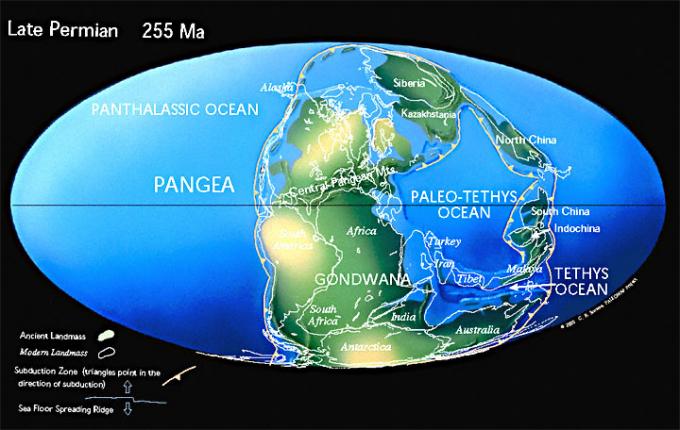Permian
The Permian is a geologic period and system which extends from 299.0 ± 0.8 to 251.0 ± 0.4 Mya (Million years ago). It was named after the Perm Krai in Russia by Scottish geologist Roderick Murchison in 1841. The Permian follows the Carboniferous and precedes the Triassic, and is characterized among land vertebrates by the diversification of the early amniotes into the ancestral groups of the mammals, turtles, lepidosaurs and archosaurs. The world at the time was very hot and dry, and was dominated by a single supercontinent known as Pangaea. The extensive rainforests of the Carboniferous had disappeared, leaving behind vast swathes of desert. The Permian period (along with the Paleozoic era) ended with the largest mass extinction in Earth's history, in which nearly 90% of marine species and 70% of terrestrial species died out.
Source: http://en.wikipedia.org/wiki/Permian | ||
Virtual museum of the Czech Geological Survey, www.geology.cz, (C) Czech Geological Survey, 2011, v.0.99 [13.12.2011]


![[ENG]](img/vlajka-cr.gif) Česky
Česky 
